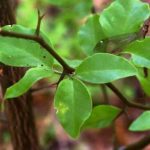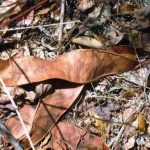TREE LIFE
October 2003
WHILE THE CURRENT FUEL CRISIS PERSISTS IT IS IMPORTANT TO CONFIRM WITH ANY OF THE COMMITTEE MEMBERS THAT THE SCHEDULED OUTINGS AND WALKS CAN ACTUALLY TAKE PLACE. SEE THE BACK PAGE FOR PHONE NUMBERS.
MASHONALAND CALENDAR
Tuesday 7th October. Botanic Garden Walk. Meet Tom in the car park at 4.45 for 5 p.m.
Sunday 19th October. This month we are visiting the game park at Lake Chivero. Directions. Take the Bulawayo Road, turn left immediately after the bridge over the Munyami River about 25 kms from Harare, and follow directions to the Game Park. Keep on this road till you reach Bushman’s Point where we will meet at 9.30 am. Bring your lunch and a chair and watch out for the monkeys.
The entrance fee is $500 per person and $500 per car.
Saturday 25th October. Mark’s Walk is to be decided so please phone him for directions and other details.
Tuesday 4th November. Botanic Garden Walk.
MATABELELAND CALENDAR
Nothing has been arranged for October.
TWO TRIPS TO THE RAINFOREST OF NYANGA PART 2
The second trip by the Tree Society in 2002 to the rain forests of Nyanga, took place at the end of the dry season from the 27th to the 30th of September. The base for the various excursions was the Eastern Highlands Tea Estate, and a large portion of the botanising took place on the Estate itself.
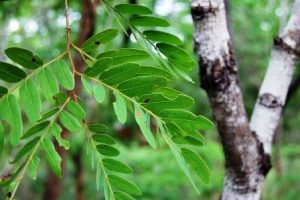
Brachystegia utilis. Photo: Bart Wursten. Source: Flora of Zimbabwe
The main objective of the trip was to look at the plants and their associations, in the medium and low altitude forest zone. In general, medium altitude forest occurs between 850 and 1350 metres and lowland forest below that. The medium zone coincides with the lowest parts of the main mountain slope where inclinations are generally less steep and in some parts the land begins to flatten out. Lowland forest is mainly found on valley floors and exceptionally on low foot-hills. Most of the lower ridges and hills are too dry, in the dry season, for rainforest development, and where still undisturbed, are covered with Miombo woodland often dominated by Brachystegia utilis.
The topographical position of low and medium altitude forest is such, that they are situated in one of the main conflict zones between nature and agriculture, and because of this, both have been drastically decimated. Practically all of the 30 to 40 square kilometres of lowland forest, which possibly existed in the Hondi Valley, has been cleared, with most of the last few hectares having been destroyed since 1980. Apart from almost pure Newtonia buchananii forest on an isolated foothill (Rumpisi Forest) and some lone groups of large trees along the Pungwe River, all that is left of the original rainforests, are some small patches along the Chiteme, Nyaminghura and Nywamba streams. There are also fairly large areas, mainly on the Eastern Highland Tea Estate, which are covered with regenerating lowland rainforest, in various stages of recovery.
In the Nyanga area, medium altitude rainforest occurs in relatively small patches towards the bottom of the eastern, south-eastern and southern slopes of the Nyangani Massif, on the lowest slopes, of both sides, of the Nyasengu Ridge, and beneath Mtarazi Falls. Most of them are relatively inaccessible.
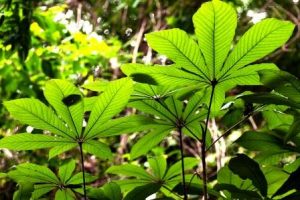
Myrianthus holstii. Photo: Bart Wursten. Source: Flora of Zimbabwe
Mature lowland rainforest was investigated along each of the three valleys. Descending southwards from the ridge which separates the Chiteme from the Nyaminghura valley the Chiteme Forest was reached. It is located close to the river and extends parallel to it for about 2 kilometres at a width of between 50 to 100 metres. On top of the ridge, clumps of medium altitude forest trees were noted; they were the rudiments of what once was an extensive forest. Species seen were Ficus chirindensis, F. lutea, F. rokko, F. sur, Myrianthus holstii, Trichilia dregeana and Trilepisium madagascariense. On the descent, forest edge species such as Bridelia micrantha, Dracaena steudneri, Harungana madagascariensis, Heteropyxis dehniae, Sapium ellipticum and Schrebera alata were observed. Closer to the river there was a highly degraded woodland which consisted of a mixture of woodland species, forest edge species and some rain forest species as well. It would have been of great interest to see this vegetation type in a less degraded state. In Zimbabwe, the transition from woodland to forest is normally sharp. Mixtures of the two are extremely unusual. Species recorded were Albizia adianthifolia, Annona senegalensis, Brachylaena rotundata, Bridelia micrantha, Cephalanthus natalensis, Combretum paniculatum, C. molle, Clutia abyssinica, Dodonaea angustifolia, Ficus sur, Keetia gueinzii, Macaranga capensis, Parinari curatellifolia, Psychotria mahonii, Rhus chirindensis, Sapium ellipticum, Trema orientalis, Tricalysia pallens and Trichilia dregeana. No time was available to make a comprehensive list. High up in the rocks, in an inaccessible position, clumps of Encephalartos manikensis could be seen.
The Chiteme Forest was practically untouched by man 20 years ago, and the surrounding woodland was well preserved and studded with occasional specimens of cycads. In September 2002, despite the fact that the area is within National Parks, the woodland has been obliterated and is occupied by squatters. Inside the forest, degradation has commenced; there is a broad path for scotch carts running the length of it, and at one spot there was a large sand pit.
However much of the forest was still in place. The dominant canopy trees were Cleistanthus polystachyus, Maranthes goetzeniana and Xylopia aethiopica with Newtonia buchananii also common. Other interesting tree species were Cryptocarya transvaalensis, Drypetes gerrardii, and Syzygium owariense.
Occasional smaller trees in the sub-canopy or sapling layer were Aphloia theiformis, Englerophytum magalismontanum, Drypetes natalensis, Garcinia kingaensis, Erythroxylum emarginatum, Macaranga mellifera, Mimusops zeyheri, Oxyanthus speciosus, Schefflera umbellifera, Scolopia stolzii and Xymalos monospora.
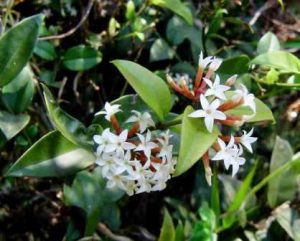
Carissa bispinosa. Photo: Bart Wursten. Source: Flora of Zimbabwe
The shrub layer was rather mixed with Carissa bispinosa, young specimens of Cleistanthus polystachyus, Erythroxylum emarginatum, Maytenus chasei and Peddiea africana the most common species. Other shrubs recorded were Alchornea hirtella, Antidesma vogelianum, Boehmeria macrophylla (platyphylla), Bridelia atroviridis, Cremaspora triflora, Plectranthus swynnertonii and Tarenna pavettoides(sometimes a small tree). There was a large variety of lianes and twiners in all layers of the forest. The following were identified – Agelaea pentagyna (heterophylla), Cephalanthus natalensis, Combretum paniculatum, Keetia gueinzii, Landolphia kirkii, Oncinotis inandensis, Psydrax kraussioides (in flower), the very uncommon Rhaphiostylis beninensis (Icacinaceae) in full flower, Rhoicissus rhomboidea, Rutidea fuscescens, Strychnos angolensis, S. lucens and Uvaria lucida subsp. virens. It was surprising that the normally common understorey tree, Aidia micrantha was not spotted. Among stones in the riverbed the rare and endangered Tricalysia coriacea was seen.
The mature forest patches along the other two streams were, on the whole, similar. The patches along the Nyaminghura stream were smaller and more tied to the water course. There were also numerous large specimens of Khaya anthotheca and Breonadia salicina was common close to the stream. Eugenia natalitia previously known as E. nyassensis was seen in flower; another species in full flower was Drypetes natalensis which exhibited a classical example of cauliflorous blossom (flowers on the old wood). Unfortunately Ficus modesta was not spotted. The only records of this species for Zimbabwe, are two specimens from somewhere along this stream. Along the Nywamba stream the forest patches were larger and more continuous, and some of them conveyed a fairly pristine atmosphere. Here Filicium decipiens was a common canopy tree, a species not seen elsewhere on this trip, and Olyra latifolia a rather robust grass, with broad leaves, was present in the shrub layer. There was also a specimen of Ficus scassellatii, which was wrongly identified as modesta at the time. Along both streams Aidia micrantha was the most common understorey tree. The lowland forests found along the three streams are between 850 and 950 metres, which is at or above the upper limit for this forest type in Zimbabwe. All three contain species which are typical of higher forest zones, and the forests are somewhat transitional, but on the whole they are more akin to lowland rain forest.
Fairly extensive regenerating forests were seen on the tea estate and also to the north of the estate along the road to Nyafaru. At lower altitudes, in the early stages of succession these forests were dominated by Albizia adianthifolia, Harungana madagascariensis and Macaranga capensis, with Anthocleista grandiflora, Bridelia micrantha, Cussonia spicata, Polyscias fulva, Sapium ellipticum and Trema orientalis also common. This composition remained similar up to an altitude of about 1050 metres, except that with increasing height. Macaranga mellifera gradually replaced M. capensis. Older regeneration forest, as seen in the lower portion of the Estate, consisted almost entirely of more or less even stands of Newtonia buchananii, interspersed with a few surprisingly tall Macaranga capensis and an understorey of Aidia micrantha. Here, tree height was up to 30 metres or more and a little of the atmosphere of mature rainforest prevailed.
The shrub layer of regenerating forest consisted of shrubs such as Antidesma vogelianum, Erythroxylum emarginatum, Maytenus acuminata, Peddiea africana, Psychotria mahonii, Rutidea orientalis and Tricalysia pallens as well as young specimens of Aidia micrantha, Newtonia buchananii, Ochna holstii and Trilepisium madagascariense.
There was also a multitude of lianas and twiners such as Agelaea pentagyna, Artabotrys monteiroae, Embelia schimperi, Gouania longispicata, Keetia gueinzii, Landolphia kirkii, Mussaenda arcuata, Psydrax kraussioides, Strychnos angolensis, S. lucens, Toddalia asiatica, Uvaria lucida subsp. virens and possibly the seldom seen Keetia venosa. In more open positions the rather unusual Dalbergia lactea was noted. Two species of ginger – Aframomum albiflorum and the smaller angustifolium occurred in abundance in many areas. Higher up on the Estate, the pioneer forests contained Clerodendrum cephalanthum subsp. swynnertonii, Gerrardina eylesiana, Halleria lucida, Oxyanthus goetzei, O. speciosus and young specimens of Podocarpus latifolius and Syzygium guineense subsp. afromontanum were also seen. Pseuderanthemum subviscosum, a purple-blue flowering soft sub-shrub was present in all stages of regenerating forest as well as in the remnants of mature forest.
It was most interesting to see that the western most portion of the Estate was totally covered with regenerating forest which had a canopy height of 10 to 15 metres. This area was cleared of the original forest long ago and in 1982 still consisted essentially of grassland.
Two medium altitude forests were visited. One was situated some distance beyond the western boundary of the Estate on the bottom slopes of Mt. Nyangani at an altitude of approximately 1200 m. It was a mature forest with a well developed age structure (canopy trees of various ages) and layering was distinct. Canopy height was at about 40 metres with some trees emerging beyond. There was a rather undulating sub-canopy, a less distinct sapling layer and a well defined and fairly even shrub cover with a height of 2 to 3 metres. The dominant canopy trees were Chrysophyllum gorungosanum, Croton sylvaticus and Newtonia buchananii. In one area there were some exceptionally large Anthocleista grandiflora. The only other tree noted in the canopy was Ficus chirindensis and one specimen of Sapium ellipticum. Common sub-canopy tree species were Cassipourea malosana, Englerophytum magalismontanum, Myrianthus holstii and Tabernaemontana stapfiana. Other typical trees of the sub-canopy and sapling layer were Aidia micrantha, Cassipourea gummiflua, Cola greenwayi, Cyathea manniana, Garcinia kingaensis, Ochna holstii, Oxyanthus speciosus, Psydrax parviflora subsp. chapmanii, Strombosia scheffleri, Tarenna pavettoides and Tricalysia pallens. In the shrub layer Isoglossa mossambicensis, a rather soft Acanthaceae, was dominant; apart from this there was a large variety of species of which young specimens of the tree and liane species formed a prominent portion and Dracaena fragrans was conspicuous. Other typical shrub species were Antidesma vogelianum, Boehmeria macrophylla, Carissa bispinosa, Pavetta comostyla, Peddiea africana, Psychotria zombamontana. Liane species recorded were Agelaea pentagyna, Combretum paniculatum, Embelia schimperi, Landolphia buchananii, Strychnos lucens, Tiliacora funifera and Uvaria lucida subsp. virens.
The other medium altitude forest visited was north of the tea estate along the road to Nyafaru at an altitude of approximately 1100 metres. The canopy consisted almost entirely of large specimens of Newtonia and the sub-canopy mainly of Ficus sur. Other tree species recorded were Anthocleista grandiflora, Cryptocarya transvaalensis, Eugenia natalitia, Macaranga mellifera, Oxyanthus specious, Sapium ellipticum and Tricalysia pallens. Shrubs noted were Clerodendrum cephalanthum subsp. swynnertonii, Dicliptera heterostegia, Pseuderanthemum subviscosum, Psychotria mahonii, Rhus chirindensis, Solanecio mannii and Vernonia wollastonii. The remainder of the shrub layer was made up by young lianas especially Agelaea pentagyna and young specimens of the tree species.
Lianas seen were Agelaea pentagyna, Cephalanthus natalensis, Embelia schimperi, Gouania longispicata, Keetia gueinzii, Landolphia kirkii, Strychnos lucens and Uvaria lucida subsp. virens.
It was not possible to locate a similar forest nearby which was investigated on a previous visit. The forest was situated at the foot of a cliff and was also dominated by Newtonia buchananii; however the dominant trees in the lower layers were Englerophytum magalismontanum and Oxyanthus speciosus.
The various medium altitude forests in the Nyanga area differ markedly from each other, and it’s often not easy to explain why. In most areas Chrysophyllum gorungosanum, Croton sylvaticus and Newtonia buchananii are an important component. Sometimes Maranthes goetzeniana is prominent. Near the Nyazangu stream Garcinia kingaensis reaches the canopy and is the dominant tree.
On some parts of the lower slopes of Mt. Nyangani, Englerophytum magalismontanum is conspicuous in the canopy and makes the largest contribution to the total biomass. Cryptocarya liebertiana, Podocarpus latifolius, Pterocelastrus echinatus or even Faurea rubriflora, all can be dominant or at least significant in some forests. The most untouched of all Nyanga’s medium altitude forest is the one beneath Mtarazi Falls. Here Pouteria (Aningeria) adolfi-friedericii, a tree found nowhere else in Zimbabwe, is the dominant canopy tree, and it is also the only locality for a few more woody plants.
On the two trips a good selection of the different rainforest types found in the Nyanga area have been investigated, but by no means all of them. For a comprehensive overview some long hikes from the top of the mountains to the various valleys below, have to be undertaken. What we did not see were some good examples of Syzygium guineense subsp. afromontanum montane forest which mainly occurs between 1600 and 1800 metres. Montane forest in which Chionanthus foveolatus and Olea hochstetteri are present is only found on the upper slopes of the Nyasengu Valley. Also no mixed sub-montane forest was encountered. This is found between 1350 and 1650 metres, it typically contains Cryptocarya liebertiana, Englerophytum magalismontanum, Garcinia kingaensis, Podocarpus latifolius and Pterocelastrus echinatus in the Nyanga area, which is a different composition to what is normally seen in Zimbabwe.
In response to the temperature gradient which exists on a mountain’s slope, there is normally, in the rain forest environment, a predictable zonation of forest types, down the slope. This is difficult to understand, since the temperature gradient is continuous, one would expect a continuous change in the vegetation pattern (a continuum) rather than the zonation. However in the Nyanga area, the zonation is much less predictable than elsewhere, and different species assemblages can occur in different places on the same altitude. This may be due to the fact that on the Nyanga massif the terrain is irregularly rugged, steep and dissected by gullies, which could cause irregular flows of cold air down the slope. Furthermore, most of the forests at Nyanga have been affected by pre-historic man, probably for up to 700 years. Terraces have been observed in forest, up to an altitude of 2100 metres, and various types of stone structures have been seen throughout the forested area, some of them buried by half a metre of soil. Both factors, irregular flow pattern of cold air and past disturbances, could have a profound influence on species distribution.
Driving from Aberfoyle through Nyafaru towards Troutbeck for the first time in September 2002, evidence was observed which suggested that much of the grassland fields and plantations which at present cover the area, were once covered by rainforest. This made it obvious that the estimate made some ten years ago, of the areas in the Nyanga district, where rainforest is the climax vegetation type, was far too low (Muller 1994).
Reference.
Müller, T. (1999). The distribution, classification and conservation of rainforests in Zimbabwe. In: Timberlake, J. & Kativu, S. (eds) African Plants: Biodiversity, Taxonomy and Uses, pp. 221-235. Royal Botanic Gardens, Kew.
BOTANIC GARDEN WALK: 6 SEPTEMBER 2003
With Tom away for a second month, Meg Coates-Palgrave very kindly stepped in to lead us again and we are very grateful to her for doing so. The subject this time was a “bit of this and a bit of that”. Many plants were already coming into flower and provided plenty of interest to the group.
Not far in to the garden was a msasa tree just coming into flower. This has a short somewhat conical inflorescence with small flowers which are subtly and magically scented. Meg also pointed out the “msasa proteas” on this tree. These are aberrations caused possibly by a gall. An insect stings the growing tip and this causes the normal leaves to be modified into a strange cluster of leaflike objects which are like the inflorescence bracts of a Protea head or a composite.
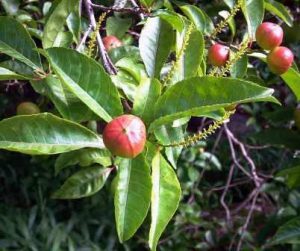
Excoecaria bussei. Photo: Rob Burrett. Source: Flora of Zimbabwe
On to the Zambezi section where we saw Excoecaria bussei, the pawnbroker tree, so called because of the three lobed nature of the fruit. Meg pointed out the important features, namely the serrate leaf margins and the milky latex. Triplochiton zambesiacus (zambezi oak) is potentially a very large tree indeed. If one chews the leaves they go slimy and Kim Damstra used to say that you could deep fry them and eat them as snacks!
On to the Tamarind tree (Tamarindus indica) with its paripinnate leaves. Meg remarked that paripinnate leaves are unusual in our flora and their presence usually implies Caesalpinioideae, which of course they do in this case. She also discussed the old controversy as to whether it is a native plant in Africa or has been introduced from India; Meg’s opinion was that it was quite possible that the species had gone the other way – namely that it was native to Africa and introduced to India.
On to another legume, this time in the Papilionoideae, Xanthocercis zambesiaca (the nyala berry), This has imparipinnate leaves with markedly alternate leaflets. It is a magnificent tree of the alluvial areas surrounding our great rivers and as the common name suggests has berries as fruit rather than the more typical dry pod of the legumes.
On to another papilionoid legume, Pterocarpus lucens subsp. antunesii, the small-leaf bloodwood. generally separable from the other Pterocarpus species in Zimbabwe by its smaller leaves. Maureen pointed out the distinctive bark which was flaking upwards and how this is similar to Erythroxylum zambesiacum (although in practice the difference between simple and compound leaves should eliminate any confusion between the two species). Meg showed us the characteristic Pterocarpus-veining which is more conspicuous above than beneath.
“All trees have labels!” And none more so than Newtonia buchananii with its bipinnate leaves with tiny leaflets and its pods which open on one side only. nearby was Craibia brevicaudata with its spectacular white flowers. Meg recalled living in Mutare and seeing the white flowers of Craibia all over the lower parts of the Vumba hills.
Towards the end of the walk we came across a spectacular flowering acacia, namely Acacia mellifera subsp. detinens. This was so named by Burchill as Acacia detinens then) because he was “detained” by the vicious curved thorns. One would expect a curved thorn acacia to have flowers in spikes and yet these appeared to be spherical; in fact they are spikes but are exceptionally condensed.
Once again I would like to thank Meg very much for assisting the Society and giving us two exceptionally interesting walks.
-Mark Hyde
ZIMBABWE’S RAILWAY PLANTATIONS
Many people may be unaware of Zimbabwe’s old Railway plantations, which date back to the late 1920s and early 1930s. From AH Croxton’s Railways of Rhodesia, published by David & Charles (ISBN 07153 602S6) we learn that the then General Manager of the Beira Mashonaland Railway, Col Birney, decided in 1926 that it would be advantageous to plant trees alongside the railway line near ganger’s cottages in Matabeleland with the object of growing timber for railway needs. The planting was done by Pat Judson, son of the Pioneer, Col Dan Judson of Mazowe Patrol fame. Pat Judson had gained a diploma in forestry at Potchefstroom Agricultural College under the Returned Soldiers’ Scheme after World War I. He was later to make his name as an early Rhodesian pilot of light passenger planes.
The plantations, mainly of eucalypts, “were soon to become a pleasing break in the monotonous sand veld with its low scrub between Heany and Gwelo.”
Robin Taylor, who supplied me with this information, also said that the Railways planted various species of eucalypts in 2-acre experimental plots for timber and for wagon construction. The plantings were done near six gangers’ cottages between Bulawayo and Gwelo, and six cottages or water tanks between Gwelo and Fort Victoria, and it was said that “the trees would remove the barren aspects of long stretches of line, and provide travellers with a pleasant view of well-ordered activity”.
How well these plantations met the objective of providing timber for wagon construction is something I don’t know, but I suspect that little came of that. I remember these plantations very well from my days of travelling the “School Train” between Fort Vic and Salisbury in the 1940s. The branch line between Fort Vic and Gwelo covered a distance of some 165 km, and it took all day to travel it, 8 am to about 5 pm. It really was a tedious journey, and gave rise to multifarious, non-scholarly activities such as smoking. One of the things I remember particularly about this six-times-a-year train journey was that the engines were partly wood-fired. They would pick up a load of eucalypt logs at the periodic stops for water at the overhead water tanks, and these would be used in conjunction with coal to fire the engines. I did travel on the school train between Bulawayo and Salisbury a few times, but this was a much faster train with Garret engines, and there were no stops to take on firewood. However, goods trains might have done so.
Many years later, during my Forestry Commission days, I did have the opportunity of inspecting one of the railway plantations-the fairly large one at Lochard Siding where the main road crosses through the plantation-and what a hotchpotch of Eucalyptus species! From memory there were E. tereticornis (the most common), E. camaldulensis, E. citriodora, E. sideroxylon, E. paniculata/siderophloia (these two are inextricably mixed in Zimbabwe), and the odd E. grandis, E. botryoides, E. polyanthemos, E. crebra, and E. melliodora. This mixture of very hard and moderately soft timbers makes it almost certain that the plantations were ultimately put to use for very little other than firewood, whether for the railway engines or for the old ganger’s cottages. Do gangers still exist on the Railways?
During the 1980s the Forestry Commission’s Research & Development Division looked very seriously at locating some if its dry-zone species and provenance trials, and progeny tests, within the railway reserves, and the Railways Management indicated an interest in the proposal. Such trials would have been conducted over a very wide range of site conditions close to various sidings where there was a Railway presence for security and protection. In the event the idea was eventually shelved.
So, if you have ever noticed and wondered about the plantations that still exist within the railway reserves, that is the story-or at least a good part of it. My thanks to Robin Taylor for supplying the information that has made this note possible.
-Lyn Mullin
DOMBOSHAWA: 17 AUGUST 2003
Twelve of us gathered on a sunny and unusually hot morning in the car park of the Interpretative Centre.
Domboshawa is always an interesting place with its rocky flora, some plants of which are endemics or near-endemics, and its hints of an Eastern Districts type of vegetation. Although this is probably the least interesting time of the year (the best is when the seepage zones are going full blast and there are numerous tiny plants) it still turned out to be a rewarding visit.
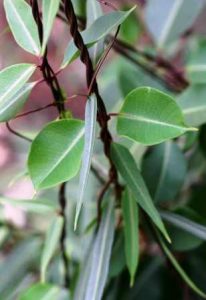
Cryptolepis cryptolepidioides. Photo: Bart Wursten. Source: Flora of Zimbabwe
We set up over the rocks, taking in the characteristic and common species. First was Euphorbia matabelensis, the three-forked euphorbia. This common shrub, by no means confined to Matabeleland, was just coming into early flower. It is very much a species of rocky places. Growing on it was a very common milky climber, Cryptolepis cryptolepidioides. This has opposite leaves which are immensely variable from broadly ovate to almost circular on the one hand to linear at the other.
Plectranthus sanguineus is the common shrub all over the rocky slopes. This was practically leafless but was just coming into flower and this allowed to us to test one feature of the plant, namely that if you crush an inflorescence you get a red stain on your fingers. This, I suspect, is the feature that gives rise to the specific name. As a general impression, it is a bit like Tetradenia riparia (ginger bush) and I have seen the two confused, but Tetradenia has larger, more coarsely crenate leaves and a much larger and denser inflorescence. Both do of course belong to the same family.
On to another rocky outcrop where we saw Tapiphyllum velutinum, with its densely velvety leaves, Garcinia huillensis (the granite garcinia), Faurea saligna and a shrubby species of Aeschynomene.
The vegetation generally was in a state of transition with some trees like pseudolachnostylis maprouneifolia showing splendid autumn colours while others such as the msasas, were already breaking into their reddish-brown new leaves.
Up over the col, we came across a jumbled heap of rocks amongst which were Hymenodictyon floribundum (the fire bush) and Erythroxylum emarginatum. We tried folding the brittle leaves near our ears and sure enough the characteristic crackling sounds were heard. Nearby also was Erythrococca trichogyne, a shrub from the Euphorbiaceae. Reasonably common around Harare, I suspect it prefers higher rainfall areas and generally grows in rocky places and amongst granite boulders.
As we approached the cave, I rather rashly predicted that we would see some plants typical of the Eastern Districts. In fact there were four contenders, all of which prefer wetter areas. These were, firstly, bracken. This is quite local near Harare although it does occur from time to time.
Secondly, a large yellow composite, Solanecio (formerly Crassocephalum) mannii. This has large inflorescences of smelly yellow flowers, an apical cluster of large leaves, and very distinctive bare stems with prominent leaf scars.
The third taxon was a Syzygium. I believe this to be Syzygium guineense subsp. afromantanum or what used to be called in Zimbabwe S. gerrardii (a name given to an entirely different taxon now). Distinguishing features were the exceptionally dark green glossy leaves and the long apical drip-tip. The more typical subsp. guineense which we saw later had paler green laves and a much shorter drip-tip.
The fourth plant with an Eastern Districts bias was Tricalysia ruandensis (congesta). This has glossy hairless leaves and is a distinctly local plant in the Harare area.
After a pleasant halt in the cool of the trees surrounding the cave, we carried on around the mountain to some areas I hadn’t seen before. Here were more patches of vegetation – islands of trees, bracken and Coleochloa, surrounded by bare rock. From there we pressed on to the summit and took a group photo at the beacon.
Finally we descended, after a stimulating morning’s walk, to the Centre for a late picnic.
-Mark Hyde
MARK HYDE CHAIRMAN


